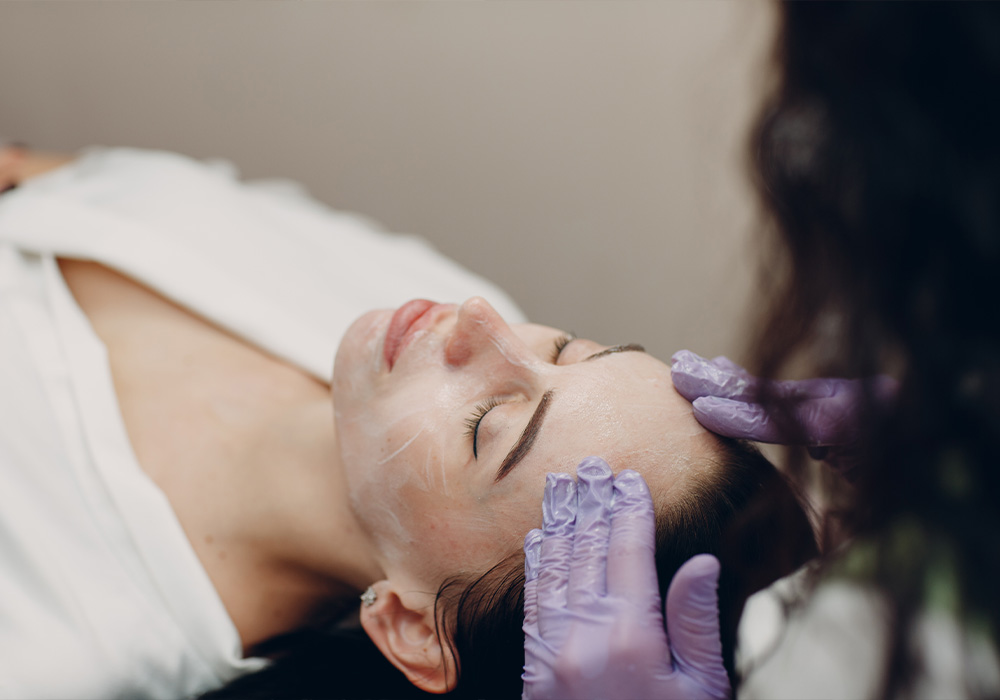The browlift is back, and this time, younger patients are opting for the surgery to tweak the shape of their arches more than to correct the hands of time. Even though nonsurgical treatments can temporarily alter the brow, 20-something celebs are dictating the trend of a more angular, feline-looking eye, inspiring a new kind of browlift.
Baby Browlift, Decoded
There are two reasons to get a browlift: to bring up a heavy, aging brow or to accentuate the eyebrows and eyes cosmetically. According to New York facial plastic surgeon Matthew White, MD, eyebrow heaviness and drooping are some of the first signs of aging noticed as early as 30 or 40—changes in fat, muscle and skin cause the brow’s tail to fall.
As for the baby browlift, the reasons for wanting one have more to do with aesthetics than aging. Plus, as La Jolla, CA plastic surgeon Robert Singer, MD points out, unlike some browlifts of the past, today’s versions are less elevated. Dr. White shares that younger patients prefer more of an arched eyebrow, which gives an exotic look, whereas older patients wish for a more refreshed, natural look. “Browlifts done for aesthetic reasons are more popular with patients in their 20s and 30s, while patients 40 and over desire the surgery to address aging,” he explains.
With younger patients looking for permanent ways to augment their brows, smaller, lateral procedures that lift the outer part of the brow without removing any skin create a more defined arch that lasts. New York facial plastic surgeon Konstantin Vasyukevich, MD shares that a lateral lift using incisions in the upper temple (hidden in the hairline) effectively raises just the tail of the brow. This technique typically concentrates on the tail because this is the area that turns downward from aging and gravity. “These patients want to revise the brow’s balance so the outer part is higher than the inner.”
Who Is the Baby Browlift For?
Not everyone who wants a modified browlift is a contender for one. As Miami plastic surgeon George Varkarakis, MD explains, women with moderate to severe brow drooping will always look better, especially in the eyes, with a browlift. “That’s the type of person who does well with this procedure.” He adds that a mini browlift also benefits patients born with naturally low-lying brows, which can decrease the distance between the eyelashes and the eyebrow. “The surgery enhances the periorbital area and creates a harmonious distance between the eyelashes, the upper eyelid sulcus and the eyebrow.”
Newton Centre, MA plastic surgeon Joseph Russo, MD says that major changes can impact the rest of the eye. “When assessing the brows, the upper eyelids must always be considered. The brow should be about one centimeter above the orbital rim.” He adds that most 20-, 30- and 40-somethings wanting to improve their brow often need the slightest correction. “It’s important not to raise the brow too high, or it will look unnatural.”
Before and After


McMurray, PA plastic surgeon Simona V. Pautler, MD performed a “gliding browlift” on this 60-year-old patient, resulting in a refreshed appearance.
Noninvasive + Chemical Browlifts
With so much interest in nonsurgical solutions to elevate the brow, neurotoxin injectables and noninvasive energy-based treatments are often the gateway to lift without surgery. But how does each measure up to their surgical cousin?
The “Botox Browlift”
Dr. Russo says one of the easiest ways to treat the muscles that pull down the brows is with neurotoxins, including Botox Cosmetic, Dysport, Xeomin, Daxxify, and Jeuveau. A few injections can lift the eyebrows, giving the eyes an open look. By strategically injecting toxins into specific muscles around the brow, Dr. Vasyukevich says the treatment elevates the outer corners of the brow. Compared to surgery, “Botox browlift” results are far more limited. And the results are short-lived, too. A surgical browlift lasts for years, whereas an injectable one starts wearing off after three months, requiring repeat injections. Even if you go the surgical route, Dr. Vasyukevich recommends regularly injecting the brow area with a neurotoxins, which will help ensure that the muscles don’t depress the brow to where it was before surgery.
Ultrasound
Ultrasound-based skin-tightening devices, such as Ultherapy and Sofwave, can also lift the brow noninvasively. Charlotte, NC dermatologist Gilly Munavalli, MD says people in their 30s, 40s and possibly 50s with heavier brows and upper lids can benefit from ultrasound treatments if they don’t want or need surgery. “Ultrasound-based devices that we use, like Sofwave, have been approved for browlifting.” He adds that Sofwave, consisting of one or more treatments, gives slight height because it contracts the skin above the brow, pulling it up slightly. But it won’t provide the same aesthetic improvement as a baby browlift. “I was pleasantly surprised how much Sofwave worked on the brows, elevating them around one to three millimeters, when we did clinical trials.
Emface, which uses a patented combination of synchronized radio frequency and HIFES facial muscle stimulation, is another option that helps stimulate collagen and elastin production, while contracting the facial muscles.
Threadlifts
Threadlifts are popular among younger people for altering the shape of the brows. The treatment involves threading absorbable sutures under the skin for a subtle lift. Even though threadlifts may create more of a fox-eye look, Dr. Vasyukevich points out that they will not pick up the brow like surgery does since the tissues are not separated. “It’s more of a pull than a repositioning,” he says, “which is why thread browlifts are always temporary.” For some people, threadlifts are a way to see what the brows could look like if surgically elevated, but he says it’s not something to rely on to change the shape of the eyebrows long-term.
Is It Time for a Baby Browlift?
How do you know when to take the plunge and surgically correct the eyebrows? There are a few indicators that surgeons use to gauge whether or not it’s time to go under the knife.
Neurotoxins are a quick and easy way to temporarily lift and shape the eyebrows. When injectables no longer raise the eyebrows or open the eyes like they used to, it may be time to consider a surgical baby browlift. Some younger patients bypass injectables and go straight for the baby browlift. However, Dr. White says the most significant indication that it’s time to consider surgery is when horizontal wrinkles are visible across the forehead at rest. “This tells me someone involuntarily raises their eyebrows to compensate for droopy eyelids closing their visual field. It’s a sign that the eyebrows are over-working.”
The Results
Dr. Varkarakis insists that good results are obtained from brows that are not excessively pulled up, no matter what browlift variation you choose. “There needs to be the appropriate vertical elevation, and it’s up to the surgeon as to how they will secure the forehead flap to the bone or periosteum,” he says. The idea of an elevated brow in all the right places without too much elevation or too strong of an arch is a trendless look that always stands the test of time.
However, Dr. Vasyukevich shares that browlifts on younger patients are still a newer surgery, and there are a lot of unanswered questions about how many years the brows will stay elevated and how soon they may revert to their original positioning. “We have a better grip on the effects and longevity of browlifts in an older demographic, but younger people who get this procedure have not been monitored long enough, so we don’t have every answer.

















